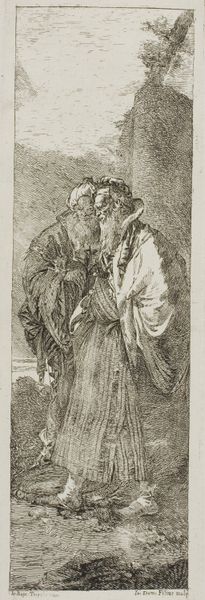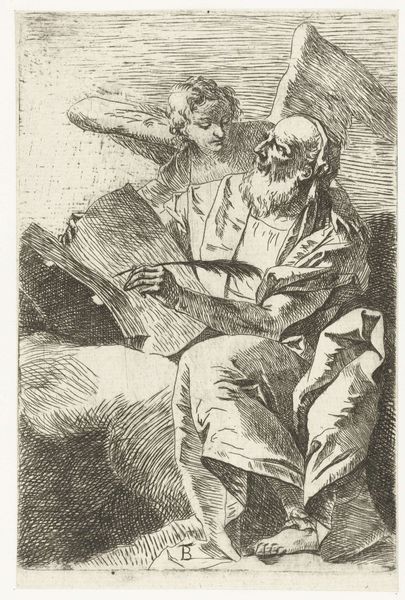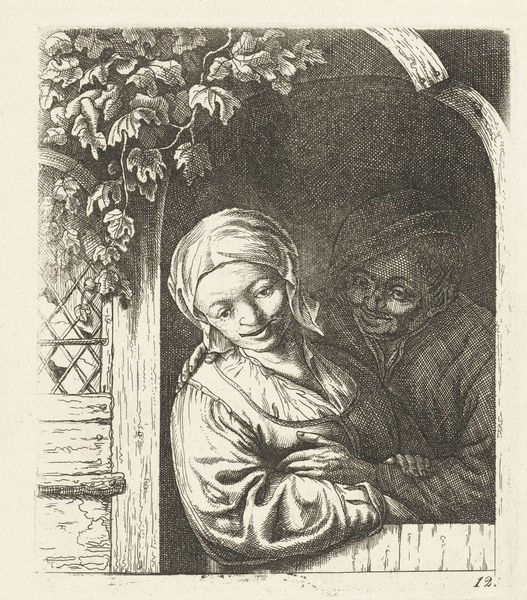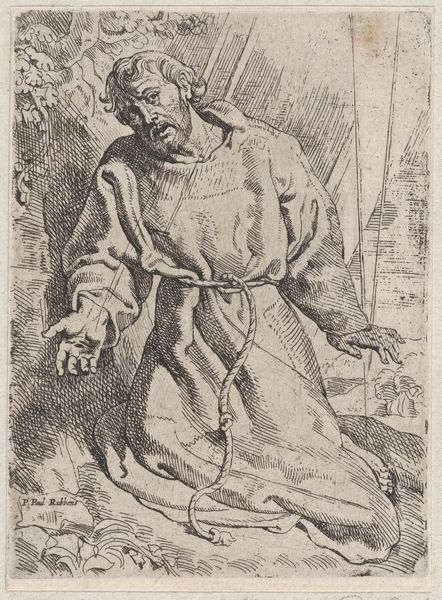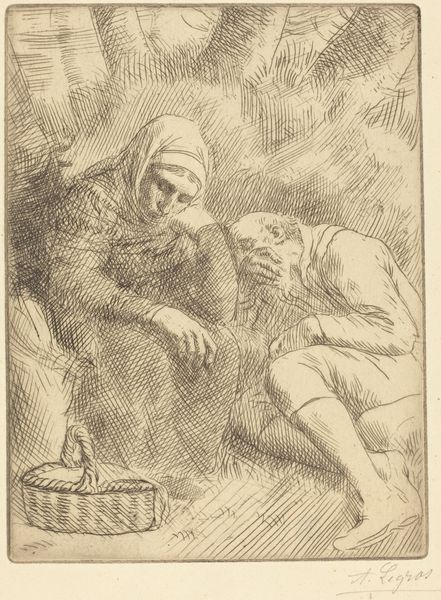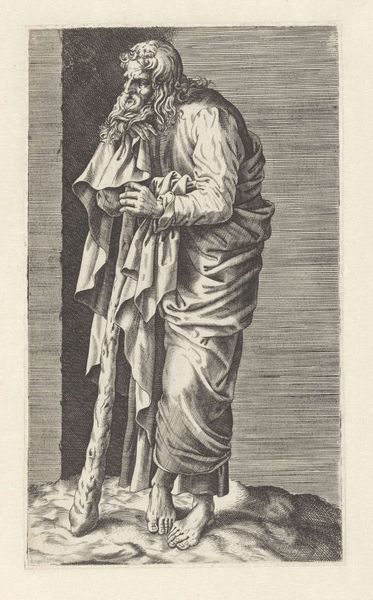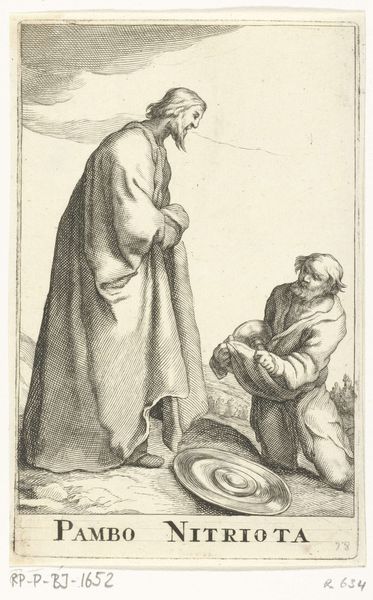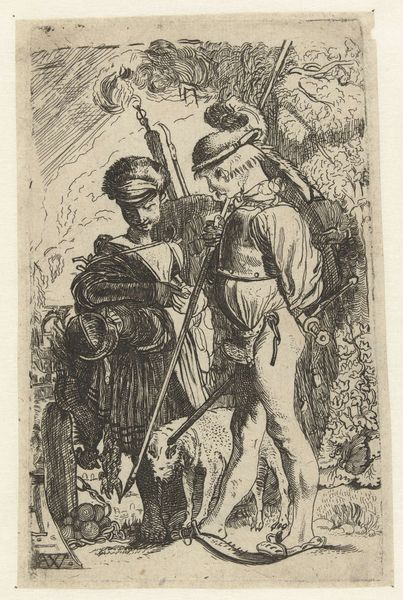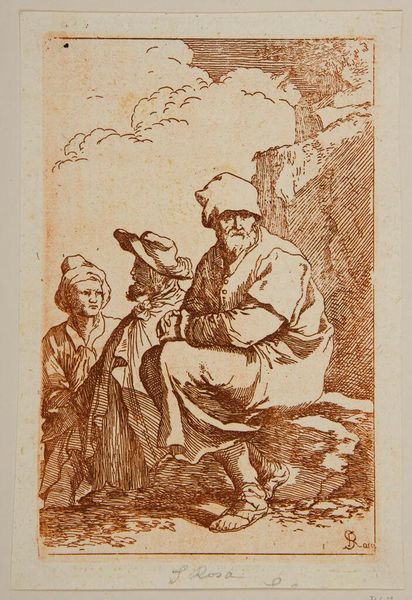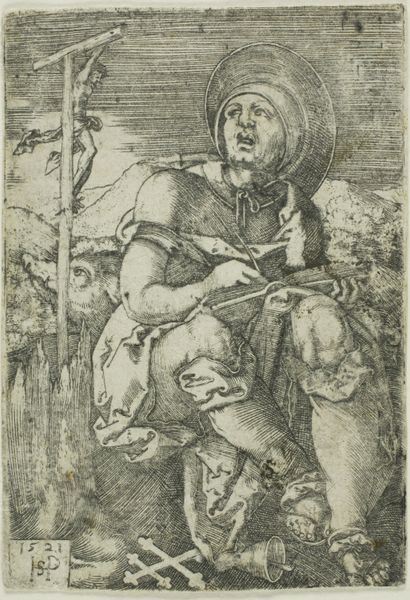
drawing, print, ink, engraving
#
drawing
#
ink drawing
# print
#
pen sketch
#
pencil sketch
#
figuration
#
ink
#
pencil drawing
#
pen-ink sketch
#
portrait drawing
#
engraving
Dimensions: 71 mm (height) x 54 mm (width) (plademaal)
Editor: Here we have Frans Schwartz’s "Two Orientals Before a Door," created in 1897 using ink and engraving. It’s interesting how raw and sketchy it feels. The textures created by the engraving process are very striking. What stands out to you when you look at this print? Curator: I'm immediately drawn to the material processes involved. Look at the labor inherent in engraving, a meticulous, time-intensive practice used to depict figures possibly engaged in trade or craft themselves. How does Schwartz's chosen medium – engraving – inform your understanding of the subjects portrayed and potentially comment on the orientalist artistic practices of the time? Editor: That’s a perspective I hadn’t considered. So, you're saying the very act of creating the artwork, the process and materials, speak to the potential exploitation of labor and perhaps even mirror colonial practices? Curator: Precisely. Consider the socio-economic context: who had access to art production and consumption in 1897? Who is being represented, and for whom? Does the material execution – the controlled, repeatable nature of printmaking – reflect or critique the exoticized view of the "oriental"? Editor: I see what you mean. The print, reproducible and therefore accessible to a wider audience, disseminates a particular image and possibly reinforces a certain perspective about the people portrayed. Are you suggesting it brings questions about authenticity of representation as related to its production means? Curator: It urges us to confront art not just as representation, but as a material object deeply embedded within social and economic structures. By focusing on its manufacture and means of circulation, we understand how power dynamics become materially inscribed in art itself. Editor: Thinking about it that way really shifts my understanding of the piece. It is far more complex when considering material processes and historical contexts. Thank you! Curator: Indeed, art speaks through its materials as much as its images. Always consider its method of manufacture to truly understand art and its message.
Comments
No comments
Be the first to comment and join the conversation on the ultimate creative platform.
